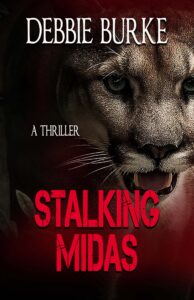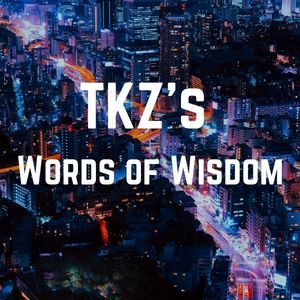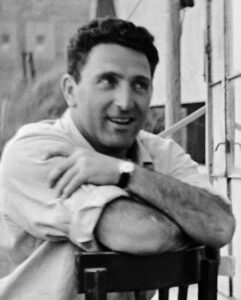
What are some items on your bucket list?

By Debbie Burke

7-time Super Bowl champ Tom Brady
Hey, psst! Wanna buy a Tom Brady Super Bowl ring?
The sports memorabilia market is estimated at $12.2 billion for 2021 with 15% annual growth anticipated for the next decade.
Collectibles don’t get much bigger than Tom Brady Super Bowl rings.
Scott V. Spina, 25, of Roseland, NJ, figured out a slippery way to cash in on that market. In 2017, he purchased a Super Bowl LI ring and memorabilia from a former Patriots’ player identified as “TJ.” Spina paid with a bad check and immediately sold the ring for $63,000 to a broker of championship rings in Orange County, CA. “TJ” was out of luck–no ring and no money.
Along with the ring, Spina had received information that allowed additional, smaller rings to be purchased for family members and friends of players.
Spina then contacted the Ring Company and claimed to be the player he’d purchased the ring from. He ordered additional rings engraved with the name “Brady” that were supposedly gifts for Brady’s baby.
Next, Spina went back to the Orange County broker and made an agreement to sell him three rings engraved with the “Brady” name, supposedly obtained from Brady’s nephews, for $81,500, nearly three times what Spina paid for the rings.
The broker became suspicious of the nephew story and withdrew from the deal. That probably didn’t bother Spina because, on November 17, 2017, the same day he took delivery of the “nephew” rings, he sold them to an auction house for $100,000. Three months later, one of the family rings was sold at auction for $337,219.
The FBI Art Crime Team investigated and Spina was charged with one count of mail fraud, three counts of wire fraud, and one count of aggravated identity theft.
On August 29, 2022, Spina was sentenced to 36 months in federal prison and ordered to pay restitution of $63,000 to “TJ,” the former Patriot player he bilked out of the original ring.

Risky plays can lead to being sacked.
~~~

In Stalking Midas, when investigator Tawny Lindholm uncovers fraud, a glamorous predator stalks her, ready to commit murder to protect her scam.
Buy at:
New Outlets for Creativity
Terry Odell
 Decades ago, I was a photography hobbyist. Long enough ago so I was shooting black-and-white film and processing in my home darkroom.
Decades ago, I was a photography hobbyist. Long enough ago so I was shooting black-and-white film and processing in my home darkroom.
Fast forward a slew of decades, and I’m getting back into it. Still at a hobbyist level, but as I said on my own blog last week, having more than one creative outlet can help deal with any frustrations in your primary field. People come to TKZ to talk about writing, so we all have that in common, but many of us have other channels we can turn to as well.
Given my books often include some aspect of photography, be it the kind of camera my covert ops agent is using for surveillance, or a character looking to become a professional photographer, I’ve enjoyed expanding on simple research and moving more into the hands-on. The more I know, the more my characters know. If the research satisfies an underlying need, so much the better. Right now, I’d say my skills lie somewhere between Kiera in In the Crosshairs and Belinda in Cruising Undercover.
I might know something about photography but it’s new all over again. Cameras bear only a vague resemblance to the ones I learned on, just as word processors or writing software bear only a vague resemblance to the Underwood and Remington uprights I learned to type on.
My son’s business includes photo trips where he takes clients to a variety of locations, both domestic and international, and leads them in picture-taking. I’ve been on several with him (as a paying client, no “mom” favors), including Alaska, the Caribbean, the Galapagos, and Croatia, and most recently, Santa Fe and Taos, New Mexico. Getting away from home, seeing new sights can add depth to characters and settings.
I’m the newbie in the workshop group on this trip. My little camera might have felt inferior next to all the big fancy ones with multiple lenses. (Okay, I own other lenses, but the advice I got was that a 14-150 zoom would cover virtually every shooting situation, so that’s the only one I carried.)
Listening to the others on this tour is like hearing a new language. Everyone else is fluent, yet they’re all here to expand their “vocabularies”. For one—not a newbie by far—it was simply pointing out a better way to hold his camera. Nobody had ever told him that before. Another learned about long exposures for clouds. And one member is interested in mystery writing, so we were able to compare places we lacked significant knowledge, but had significant interest.
For me, it’s almost all new. They’re talking about swipes, zoom blurs, multiple exposures, blue hour shots—and I’m hoping my settings are close to correct, period. Histograms? I’m supposed to look at them? What are they supposed to look like? All I see is something interfering with the image.
But that’s the point of the workshop. To have people show you (often more than once) better or different ways to do things. We were shooting in areas that almost always required moving in close for detail shots. The overwhelming amount of “stuff” made it impossible to capture everything in a single shot, so zooming in on details was the way to get better pictures. As it compares to writing–we’re always learning new skills, improving the craft.
How many times have we read passages from books and said, “Damn, I wish I could do that?” With my photography, I don’t compare my work to that of the experts, but I can look at what I create and try to make it better. Just as everyone’s voice in writing means 7 people can be given the same story prompt and no two will be alike, 7 photographers can shoot the same subject, and every image will be different.
On Monday, Kay talked about words and pictures. As the final activity in our workshop, each of us was to share three images for discussion. Photographers notice things non-photographers don’t. They point out little details that add or detract to the picture–things most of us wouldn’t notice. Kind of the way writers notice things like POV issues, descriptions, overused words, etc. One group member talked (and talked) about the emotions he was trying to convey in each of his shots. Did I get the same feelings? Not really.
Several in the group chose pictures of a very old cemetery taken at the Taos Pueblo. Each had a different approach. Different angles, and different renderings–one in black and white. Instructors made comments about things like leading lines, rule of thirds, toning down or playing up shadows.
One group member was from the east coast and had never experienced anything like what she was seeing in New Mexico, and she focused on details that spoke to her. She liked the shapes and colors of things.
No matter where you are, looking at everything around you as a writer provides story and character fodder as well as a photographic image. Driving down the highway and seeing articles of clothing strewn about triggers story ideas. Is there a body somewhere?
If you’ve stayed with me this long, here are some of the pictures I took. Consider them first drafts, as I’m still learning how to spot those details that will make them better images. Normally, I wouldn’t talk about ‘before’ and ‘after’ pictures, the same way you don’t share first drafts with the general public, but this is The Kill Zone, after all.
By Debbie Burke
In September, my friend Cathy Raven was a featured speaker at the four-day Montana Book Festival in Missoula. Her first book is a nature memoir entitled Fox and I, about her friendship with a wild fox. It won the PEN award, among other honors.
Cathy and I met more than 20 years ago when we took a workshop from Tim Cahill, travel writer and founder of Outside Magazine.
After Cathy moved across the state, we lost touch but recently reconnected via Twitter. On Sunday morning, I drove 120 miles to Missoula for her festival talks and to congratulate her in person.
I’m somewhat acquainted with Missoula so I had an inkling about what was in store.
The streets of Missoula were originally laid out in the 1880s by feuding landowners who each wanted their own hunk of real estate to dominate. Diagonal “Slant Streets” were created for a proposed new town called South Missoula. But political maneuvering stymied the new town and slant streets were surrounded by parallel and perpendicular byways, as shown in this photo. 
When drivers try to navigate the off-kilter convergence of Brooks Street, Russell Street, and South Avenue, they can thank (or curse) the early citizens who created the notorious Malfunction Junction.
As if diagonal streets and triangle-shaped blocks weren’t confusing enough, routes in Missoula are required to have more than one name—preferably three or four. Brooks Street is also Highway 93 and Highway 12, at least part of the time…until it changes.
Then there’s East and West Broadway. East Alder Street merges with East Spruce Street, which crosses North Second Street East, then eventually runs into West Greenough Drive. Throw in boulevards that are one-way part of the time and two-way other times. Add thoroughfares that dead-end in the Clark Fork River, or at the railroad tracks.
And there you have the mishmash of Missoula.
If Siri had accompanied me, I suspect she would have jumped off the Higgins Street Bridge and drowned herself in the river.
I had printed out several pages of Google maps and have a reasonably good sense of direction. Plus my rearview mirror has a nifty little built-in compass.
I rolled into town about 1 p.m. and missed the motel on Brooks Street because I stayed on 93 which is supposed to be the same as Brooks Street…except when it isn’t.
The Book Festival was at the four-story Missoula Public Library—a skyscraper by Montana standards. While cruising blindly along East Broadway, I happened to spot the towering glass library on the next street over. East Main is a one-way street that amazingly was going the right way.
Success!
Cathy’s phone went to voicemail so I had time to poke around. After the two-plus hour drive, I was glad to climb four flights of stairs to stretch out a bit.
On the top floor, an outside deck around the building featured 360-degree views of the city, rolling hills, and mountains. A volunteer at the book sales table gave me the schedule and, surprisingly, didn’t charge an admission fee, perhaps because it was the afternoon of the festival’s last day.
I peeked into several rooms where presentations were going on but didn’t see Cathy. Back down at street level, I happened to glance over at several people reading at a table.
There was Cathy, deep in her book and writing on a notepad, preparing for her talk.
We hugged like long-lost sisters and visited until she needed to get back to work on her talk.
Her panel was more than an hour later so I figured I’d try again to find my motel.
Missoula is home of the University of Montana. It has winding river walks, bike trails, beautiful historic buildings, and lovely old homes. I know because I saw all of those as I spent the next half-hour totally lost.
The motel was to the south west but, Missoula streets being the way they are, you can’t get there from here.
My mirror compass said I was going the right direction but the street names (aliases, actually) didn’t jibe with Google maps. At last, I found the motel, hiding on a slant street not far from Malfunction Junction.
As I pulled into the parking lot, a woman was getting out of her car, putting a hardback book in her bag.
Turned out she was “Parker,” the evening desk clerk at the motel. We had talked the day before when she made my reservation over the phone.
She said she was an avid reader who spent lots of time at Barnes & Noble.
I told her I was a writer.
That admission is always a bit embarrassing because people’s eyes widen, they smile broadly, and shake your hand as if they’re in the presence of someone important.
We writers know better—the unglamorous reality is we wear sweat pants, sit hunched over computers all day long, play with imaginary friends, and make up stuff. Sane, normal people don’t do that.
Parker took my card, said she loved thrillers, and would look up my books. Cool!
After I checked in, she gave me clear, easy-to-follow directions how to get back to the library. Thanks to Parker, I arrived there in under 10 minutes.
Cathy was on the so-called critter panel—authors who’d written books about wildlife including kingfishers, grizzlies, golden eagles, and Cathy’s Fox and I.
 Despite many awards, stellar reviews, and glowing mentions in Time and People magazines, she’s suffering first-book jitters.
Despite many awards, stellar reviews, and glowing mentions in Time and People magazines, she’s suffering first-book jitters.
Cathy is Mensa-brilliant with a PhD in biology but also shy. She’s much more at home in nature than around people, even though she’s a professor who’s taught hundreds of students over many years.
Her wry, quirky humor quickly won over the audience. Without trying to be funny, she’s very funny.
After the panel, a lot of books by other authors remained on the table but Cathy’s sold out. She fretted about that until I reminded her that selling books was the whole point. Running out meant success.
People mentioned they had ordered multiple copies of her book as gifts.
Her solo talk was an even bigger hit, especially considering it was Sunday evening at 6 p.m. when most festival attendees had already left.
She described her solitary life in the Yellowstone Valley where she’d hand-built her home. As she did research on the area’s botany, weather patterns, and animal behavior, weeks would pass without speaking to another person.
However, a sociable red fox started showing up every day to visit the introverted, reclusive human. They forged an unconventional but close friendship. Trust developed to the point where Fox brought his four kits for Cathy to babysit while he went a distance away to take a nap.
At the end of Cathy’s talk, a woman in the audience presented her with a dazzling sunflower that looked too perfect to be real. But it was.

Dr. Catherine Raven
We headed out for dinner, assured by locals that Missoula has many great restaurants.
Few, however, are open on Sunday night.
For a college town, they roll the streets up early. After a half-hour quest, we found a place, enjoyed a good meal, and had a great catch-up visit.
But, following dinner, we lost our bearings roaming through the dark, deserted downtown and didn’t know how to get back to Cathy’s motel. We drove around looking for a familiar landmark or street name but found none.
Then we spotted a Missoula police cruiser parked alone on a street. I pulled to the curb in front of him and Cathy and I jumped out of the car to ask him directions.
In hindsight, that wasn’t a smart move. But, as a child, I’d always been told if you get lost, ask a policeman.
A young cop jumped out of his rig, talking rapidly into his lapel mic, wearing a wide-eyed deer-in-the-headlights expression. I’m not sure if he had his hand on his weapon because he was standing behind his open car door for cover.
Two women—old enough to be dangerous, from out of town, lost in Missoula, asking directions to a motel whose name we couldn’t remember but was near a McDonald’s—utterly befuddled this poor young cop. I’m sure he thought we were impaired even though we hadn’t had a drop or a toke.
He finally collected his wits (and probably heard back from the dispatcher that there was NOT an APB out on an old white Toyota Highlander with two female occupants). Still looking flummoxed, he managed to direct us to Broadway where we found Mickey D’s and the motel.
Cathy and I said goodbye, resolving not to let another 20 years go by without seeing each other. I headed for my motel on the other side of town.
By this time, I’d driven enough of the mysterious streets of Missoula to be fairly confident of finding my way back until…the southwest section of town went black.
A power outage shut down street lights, buildings, traffic signals, and the sign for the motel. For several blocks, I drove in total darkness except for my headlights. By luck, I spotted the motel just in time to turn into the shadowy parking lot.
In the office, two lanterns glowed. I had a flashlight but, rather than enter a completely black, unfamiliar room, I opted to hang out in the dim lobby with my new friend Parker. A couple of motel workers wearing headlamps checked the property and muttered about buying a generator.
The electric company’s text updates estimated the power would be restored by 9:30 p.m. It was now 9:45. The power had been off long enough that the computer battery backups in the office had run out of juice.
Parker said, before the power went off, she’d looked up my books. She wanted to read them but didn’t have cash with her and I can’t take credit cards.
We spent the next hour, shooting the breeze and solving the world’s problems. She gave me directions to Barnes & Noble, where I planned to go the next morning before heading home.
Finally the lights popped back on.
Whew.
The motel is independently owned, not a chain. Its tagline is “Nice rooms for nice people.”
I went to my room and thought about how nice Parker had been, giving me directions that carried me safely through Malfunction Junction. She’d kept me company during what could have been a nervous hour in an unfamiliar dark place.
I grabbed a copy of Instrument of the Devil (which, fittingly, is about a terrorist targeting the power grid), signed it, and gave it to her.
The next morning, I visited Barnes & Noble. The manager is very supportive of Montana authors, even independently published ones. She ordered a few copies and we talked about my doing a signing there next spring (they’re scheduled months ahead with author appearances).
Despite getting lost repeatedly, inadvertently scaring a cop, and surviving a power outage, the trip to Missoula was a success.
I reconnected with an old friend and watched her bloom as she talked to audiences about her book. I met a lady who gives better directions than Siri and Google Maps combined, whom I hope will become a fan. And I have a future book event to look forward to.
Not a bad day’s work for a writer.
~~~
TKZers: Have you ever gotten hopelessly lost but found a better reward than what you were originally looking for? Please share your wanderings in the comments.

“Words – so innocent and powerless as they are, as standing in a dictionary, how potent for good and evil they become in the hands of one who knows how to combine them.” –Nathaniel Hawthorne
* * *
Here at the Kill Zone Blog, we’re all about words. Combining those innocent words into sentences, paragraphs, and finally stories is the thing that drives us.
We’ve also heard it said, “A picture is worth a thousand words.” But is it?
* * *
The movie Words and Pictures was released in 2013, but I saw it for the first time a year or so ago. The movie features a “war” between its two protagonists, both teachers at an elite New England prep school.
Jack Marcus (Clive Owen) teaches Honors English. He is brash and sarcastic and annoys his colleagues by trying to lure them into word games which he is sure to win. But Mr. Mark, as his students call him, is thoroughly in love with the English language, and the best scenes in the movie take place in his classroom where he challenges, inspires, and even berates his students, all in an attempt to engage their social media-deadened brains to appreciate the power of language. In one scene, he even gives them an assignment to invent a new word to add to the English language. The results are fun and appealing.
Actress Juliette Binoche has a harder task holding her own as the Honors Art teacher, Dina Delsanto, an educator who is less charismatic than the feisty Marcus. Delsanto suffers from rheumatoid arthritis which has robbed her of her independence and some of her ability to create. As a new addition to the faculty, she is immediately put into conflict with Marcus.
Of course, these two characters have to become involved with each other, and their verbal sparring sets in motion a “war” of words versus pictures that culminates in a school assembly where students will evaluate the power of each of the creative methods.
As the movie’s primary complication, Jack Marcus is an alcoholic. Although he’s managed to hide his problem from the school administrators, he fears “the fire has gone out.” When his sloppy behavior at a local restaurant and his lack of creative output threaten his position at the school, he’s forced to take extreme steps to keep his job. One of the best lines in the movie is uttered by Marcus when the headmaster bemoans his lack of output.
Headmaster: “You were a published author.”
Marcus: “I’m still a published author. It doesn’t go away like the mumps.”
There are minor characters and subplots that swirl around the main story, but the essence of the film is the comparison of the value of words vs. pictures. I know which I would vote for.
* * *
Incidentally, I was doing a little reading about how words and pictures affect brain function when I came across an article at thinkonyourfeet.com. The article states that right-brained people are more likely to think in images whereas those of us who are left-brained are more likely to think in words. One of the conclusions in the article is that writing demands a whole-brain approach. I like that.

So TKZers: Which is more powerful: Words or Pictures? Do you think in words or in pictures? Have you seen the movie Words and Pictures? What’s your opinion? What movie about writing and / or authors would you recommend?
by James Scott Bell
@jamesscottbell
 Before there was James Patterson there was Sidney Sheldon.
Before there was James Patterson there was Sidney Sheldon.
His second novel, The Other Side of Midnight (1973) was a monster bestseller. A string of #1 NYT bestsellers followed. Sheldon sold an estimated 400 million books before he died.
And he didn’t start writing fiction until he was in his early 50s!
Before that Sidney Sheldon led, if you’ll pardon the expression, a storied life.
He was born in Chicago in 1917, to Russian-Jewish parents. He almost committed suicide at age 17 (it wasn’t until decades later that he was diagnosed as bipolar). What pulled him back from the brink was writing. He pursued it with passion, and the results were astounding.
He had two hit shows on Broadway at the age of twenty-seven.
After World War II, he became a studio writer in Hollywood. His screenplay for the Cary Grant comedy The Bachelor and the Bobby-Soxer won the Academy Award for best screenplay of 1947. Sheldon was 30 years old.
Not that all this was a smooth trajectory toward the top. Far from it. Sheldon suffered as many setbacks as he had triumphs. He described the writer’s life (especially in Hollywood) as being on an elevator. Sometimes it’s up. Sometimes it’d down. And if it stays down, you need to get off.
Sheldon continued to ride that elevator in the 1950s. Up and down. He even had a great idea for a Broadway show ripped off from him.
In the early 60s he decided to take a crack at television. He created the hit series The Patty Duke Show, and get this: Sidney Sheldon himself wrote virtually every episode himself. Over 100 in all!
Do you know how absolutely amazing that is? To be that sharp and funny week after week? And all this while suffering from what at the time was called manic-depression.
But even more amazing was the personal strength and courage he and his wife showed through two highly emotional tragedies.
They had a baby girl born with spina bifida and, despite all the best medical care, she died in infancy. After a long period of mourning they decided to adopt a child. An unwed mother whose boyfriend had left her gave the baby up. They brought her home and for six months loved her and bonded with her.
But under California law at that time, the biological mother could change her mind within six months. This mother did, and one day the authorities came and took the Sheldon’s baby daughter away.
Sheldon and his wife turned to religion for solace. Sidney (now being treated with Lithium) continued to work. He started developing a new television show from an idea he’d had for a long time. It was about an astronaut who finds a bottle on the beach and frees a genie. But this genie would not be the big, lumbering, male giant of tradition. Oh no. This one would be a babe. That’s how I Dream of Jeannie was born.
During this time, the 1960s, Sheldon kept noodling on a thriller idea about a psychiatrist who is marked for murder though he has no enemies. He must use his professional skill to figure out who is stalking him. That became Sheldon’s first novel, The Naked Face. It was published in 1970 and won the Edgar Award from the Mystery Writers of America.
Sheldon caught the novel-writing bug, big time. Here he could create whatever world he wanted, without regard to budgets, sets, actors, or restrictions of any kind—especially the story-by-committee nonsense of Hollywood.
He had an unsold screenplay in his drawer and turned it into The Other Side of Midnight. Sheldon was 56 when this novel rocketed him into the literary stratosphere.
His last thriller, Are You Afraid of the Dark, was published in 2004, when Sheldon was 87.
Sidney Sheldon is the only writer ever to have won a Tony, an Oscar, and an Edgar Award. Let’s see if anybody ever does that again!
In The Writer’s Handbook 1989, Sheldon talked about his method. Here’s some of what he said.
The Secret
Sheldon was asked, What are some of the devices you have found most successful in getting your readers to ask breathlessly, “What’s next?”
The secret is simple: Take a group of interesting characters and put them in harrowing situations. I try to end each chapter with a cliffhanger, so that the reader must turn just one more page to find out what happens next. Another thing I do is to cut out everything that is extraneous to the story I am telling.
Simple to understand, yes. To put into practice book after book, well, that’s something else again. But you can learn how to write more interesting characters, how to make a form of death (physical, professional, psychological) hang over every scene (“harrowing situations”), and ways to end a scene or chapter with what I call a “Read On Prompt.” This is all to be filed under Craft Study.
Process
Sheldon was a “discovery writer” or “pantser.” But let’s hear what that actually meant.
When he began a book, all he had in mind was a character. He then dictated to his secretary, developing the character, bringing others in, letting them interact. “I have no idea where the story is going to lead me.”
But that is only for the first draft. Then came the work.
The first rewrite will be very extensive. I will discard a hundred or two hundred pages at a time, tightening the book and clarifying the characters.
A hundred to two hundred pages? Yikes! There’s more: “I usually do up to a dozen rewrites of a manuscript.” Yikes and gulp!
He would spend a year or year-and-a-half rewriting and polishing a book. This paid off, of course. Big time.
He did have a caveat:
I want to emphasize that I do not recommend this way of working for any but the most experienced writers, since writing without an outline can lead to a lot of blind alleys. For a beginning writer, I think an outline is very important…It is a good idea to have a road map to tell you where you are going.
The Leave-Off Trick
Like Hemingway, Sheldon would end his day’s work after beginning a new scene. Sometimes he’d quit mid-sentence. “In the morning, when you are ready to go to work, you have already begun the new scene.”
Also, he would begin his writing sessions by lightly going over the previous day’s work.
The Mid-Plot Blues
Sheldon said he usually wanted to give up in the middle of his novels. I experienced this early in my career and came to call it the 30k Brick Wall. I found that several successful writers reported the same thing.
Why should this be? Maybe because by 30k you’ve got the engine revved up and are now staring at that long middle, wondering if you’ve got the right foundation and enough plot to make it to the end. The writing willies, if you will.
Formerly, my solution was simply to take a day to brood and imagine and jot notes, maybe adding a new character or two. Then, once I started up again, one scene at a time, I would get back into the flow. That works.
Now I find that if I have my signpost scenes in place, especially the mirror moment, I don’t hit the wall anymore.
The Emotion Quotient
You get your readers emotionally involved in your characters by being emotionally involved yourself. Your characters must come alive for you. When you are writing about them, you have to feel all the emotions they are going through—hunger, pain, joy, despair. If you suffer along with them and care what happens to them, so will the reader.
Wise words with which we all should agree.
Minor Characters
I refer to minor characters as “spice.” They are an opportunity to delight readers, so don’t waste them by making them clichés.
Sheldon:
Every character should be as distinctive and colorful as possible. Make that character physically unusual, or give him an exotic background or philosophy. The reader should remember the minor characters as well as the protagonists.
I’ll close by recommending Sheldon’s memoir The Other Side of Me. I love reading bios of authors. This one is entertaining, instructive, and inspirational.
What do you think of Mr. Sheldon’s advice?
Homegrown Thrill Rides: A checklist for suspense, what is the domestic thriller, and tips on writing one.
As a now retired librarian turned full-time fiction writer, diving into the vast Kill Zone archives for three nuggets of wisdom is the perfect role for me here at KZB. It gives me the opportunity to share so many insightful posts on craft, publishing, and much more. For today’s post, I want to take a look on creating “homegrown thrill rides.” It begins with a sampling from a checklist on how to create suspense and tension for the reader, a necessary ingredient in any thrill ride. We then turn to excerpts from a pair of posts on the domestic thriller: defining it, and a few of the key factors to consider in writing one.
Please weigh in with your own thoughts. I have included a few questions as prompts for comments after the excerpts. Date links are provided to the full posts which can provide further fuel for thought and discussion.

Experiment with these devices to increase suspense and intrigue:
__ Sprinkle in some foreshadowing – drop subtle advance hints and innuendos about critical plot points or events.
__ Withhold information – use delay tactics, interruptions at critical points.
__ Stretch out critical scenes – milk them for all they’re worth.
Surprise or shock your readers:
__ Add in a few unexpected twists. Put a big one in the middle and another big one at the end.
__ Use surprise revelations from time to time – reveal character secrets and other critical information the reader has been dying to know.
__ Have your main character experience at least one epiphany – a sudden significant realization that changes everything for them. Try putting one in the middle and one near the end.
__ Write in some reversals of feelings, attitudes, expectations, and outcomes.
Keep adding more tension. Increase the troubles of your protagonist by using these plot devices:
__ Ticking clocks – every second counts.
__ Obstacles, hindrances – keep challenging your hero or heroine.
__ Chases – your protagonist is chasing or being chased.
__ Threats or hints of more possible danger ahead.
__ Traps and restrictions – your character becomes somehow trapped and must use all their resources to get out of the situation.
Create a memorable, satisfying ending.
Design a big showdown scene, an extremely close battle between the hero/heroine and the villain.
__ Write in a surprise twist at the end.
__ Leave your readers satisfied – the hero wins by a hair, the main story question/conflict is resolved.
–Jodie Renner, June 12, 2013
I wanted to talk about a sub-genre known as the “domestic thriller.” I’m not sure when this was coined, but it’s quite popular now, especially after Gillian Flynn’s runaway bestseller, Gone Girl. More recently, A. J. Finn’s The Woman in the Window has kept readers flipping the pages.
My research didn’t uncover a hard-and-fast definition of the domestic thriller. It seems to be a cousin of the psychological thriller, but with a home setting and (usually) a woman as protagonist and (usually) a male as the villain. A title like It’s Always The Husband (Michele Campbell) will clue you into the vibe.
I don’t, however, consider this a new genre. It’s at least as old as Gaslight, the 1938 play by Patrick Hamilton. You’ve probably seen the 1944 movie version for which Ingrid Bergman won the Academy Award as Best Actress. (I actually like the British version better. Released in 1940, it stars Anton Walbrook and the absolutely amazing Diana Wynyard. Catch it if you can!)
Hitchcock’s Shadow of a Doubt (1943) may rightly be deemed a domestic thriller.
I would classify many of Harlan Coben’s books as domestic thrillers. Suburban setting, ordinary person, crazily extraordinary circumstances.
Which is my favorite kind of thriller. I’ve always loved Hitchcock, and he was the master at the ordinary man or woman theme. My favorite example is the 1956 version of The Man Who Knew Too Much starring James Stewart and Doris Day. The idea, Hitchcock once explained, came from a scene he pictured in his mind. A foreign, dark-skinned man, with a knife in his back, is being chased, and falls dead in front of some strangers. When someone tries to help him, heavy makeup comes off the man’s face leaving finger streaks on his cheeks.
So Hitchcock did that very thing. He had Stewart and Day as tourists in Morocco, and in the marketplace one morning a man with a knife in his back falls at Stewart’s feet. Stewart gets the face makeup on his hands.
Of course, right before he kicks the bucket the dying man whispers a secret of international importance into Jimmy’s ear, and we’re off and running. The bad guys want to know what Jimmy knows and they’re willing to kidnap his son to find out.
–James Scott Bell, May 6, 2018
Keys Factors for Writing Domestic/Psychological Thrillers
1.) Set your domestic thriller in familiar settings. Give the reader comfort until they realize your novel doesn’t take place in Mayberry. Set your story in a small town, on a commuter train, in a home with a family who could live next door to you, or create a situation that seems harmless at first until it escalates into a terrifying tale. Much like Stephen King is partial to turning everyday objects into nightmares–I’ll never use a turkey carving knife again–it’s important to think through an effective setting that lulls the reader into a false sense of security until you pull the rug out.
2.) Make your story hinge on familiar subjects. I’ve suggested a few below, but I’m sure you could come up with more that could be turned on its ear with escalating tension. Use your own personal experiences to discover what might touch your readers.
3.) Now ask yourself the critical question of “what if…” What are the worst plot twists that could happen in the world you’ve created? Think WAY out of the box. Use a dartboard to add some unpredictability to your brainstorming.
4.) Make your character(s) real. Imagine people you have known, but elevate them into a major player’s role in your story. It helps to start with the familiar to make it real, but then your character would take on his/her own journey. Remember, your characters need to be real and not supersized into movie star status. Take “every man or every woman” and force them to step into an horrendous plot. Make your starring character(s) believable.
5.) Give your characters flaws that could prove to be fatal. It’s a balancing act to pick vulnerability that doesn’t make them appear too weak. Give them insecurities they can overcome in a believable way, without making them whiners. Force them to face their insecurities. Are they capable of overcoming their worst fears? Give them a chance to do it. Will they? Dig deep with a journey for your character to survive through your plot. They must struggle to gain ground or appear that they never will. Nothing trite will work here. It must seem insurmountable. I found a great resource for character flaws – 123 Ideas for Character Flaws
–Jordan Dane, January 3, 2019
***

Irwin Shaw
I once told a class I was teaching that writing is an intellectual contact sport, similar in some respects to football. The effort required can be exhausting…and you are hurt on almost every play; but that doesn’t deprive you from getting peculiar pleasures from the game. — Irwin Shaw
Discuss!
Your life runs by in a hurry. In three acts, you were born, you mature, and you’ll die. Beginning, middle, and end. Classic story structure, and what really counts is what you do on your runway of life. Especially with the time you have left.
A few things brought on this post.
One—my brother recently passed away. He was sixty-nine, and there was no warning. It was a brain aneurysm which is a pre-existing condition that’s nearly impossible to detect or intervene with.
Two—I turned sixty-six yesterday. That milestone, along with my brother’s sudden death, made me reflect on what time I have left. The events put into perspective an urgency I have in continuing important tasks.
Three—I received a newsletter from Dr. Peter Legge where he outlined the Runway of Life. In a three-minute video, Dr. Legge gave me an “ah-ha” moment. I’d like to pass it along to my friends at the Kill Zone.
 Peter Legge is a well-known force in Vancouver. He’s a highly accomplished entrepreneur, author, speaker, publicist, and community leader. Dr. Legge is also a motivator and personal mentor to many folks, regulars and high achievers.
Peter Legge is a well-known force in Vancouver. He’s a highly accomplished entrepreneur, author, speaker, publicist, and community leader. Dr. Legge is also a motivator and personal mentor to many folks, regulars and high achievers.
The Runway of Life is a concept. It’s an abstract, yet crystal clear, look at where you’ve come from, where you are, and where you’ll end. Not when you’ll end—that’s something we don’t know so, for this exercise, we’ll make up a number.
In the video, Dr. Legge draws a horizontal line in black ink on a white background. The line represents your runway of life—your life’s timeline. On the left, he draws a zero. This represents the day you were born.
Somewhere along, he draws a figure for his age. Dr. Legge is currently eighty, so he dots an 8-0. This shows since birth to today he’s gone 80 points on his runway of life.
His final figure is hypothetical because there’s no way he, or anyone else, can know the age he’ll die at. Dr. Legge qualifies that and says for this exercise the death number doesn’t matter. “It could be eighty. It could be a hundred. But for this demonstration I’ll put down ninety.”
So, Dr. Legge jots 9-0 at the right side of his runway. Clearly, he’s used up 80 years of his life’s runway, and he expects to have 10 years left.
“Zero to eighty are gone. They’re history and they’re past.” Not so with the remaining ten still on the runway. It’s what you do with the remaining time on your runway of life that now matters.
I drew a runway of life for myself. I started at zero like everyone else. I have sixty-six around three-quarters to the right. And I picked ninety as my cash-out number. I base that life expectancy on my genealogy which has had some pretty old birds in the family tree.
I realize my brother’s last number was only sixty-nine. However, there’s a big medical difference between my brother and me. He was a heavy smoker, and I’ve never touched the stuff. Cigarette smoke is the most significant modifiable risk for cerebral aneurysm. Heart attack / myocardial infarct as well.
My runway of life looks like this:

I’ve used 66 years which is 792 months, 23,760 days, and 570,240 hours. If my calculator is right, I have 24 years left on my runway of life—288 months, 8,640 days, and 207,360 hours.
It’s what I do with those remaining years, months, days, and hours that count going forward. I have no idea what the right, right number is on my runway of life. It could be a lot lower. So, I’m moving ahead making every day matter.
I’m doing two primary things. One is keep creating content, and keep learning how to do it, for the entertainment industry (aka being a writer). The other is enjoying time with my family and friends, especially out on our boat.
And if I blend the best of both worlds, like I’m doing right now, I’ll write and learn from the chart table in my wheelhouse till I’m buried at sea by my family and friends, hopefully well past one hundred.
Kill Zoners — Have you given any thought to your runway of life? Care to share an urgency?
A couple of weeks ago, I posted here about my great fortune to score an ongoing talk radio gig on WRNR Radio/TV 10 in Martinsburg, West Virginia. It’s strictly a talk format, with Rob Mario as host, and then two co-hosts, of which I am one a couple of times per week.
It’s interesting sitting on the other side of an interview. Having done more than a few of them over the years as the interviewee, being the interviewer has changed my perspective a bit. In recent weeks, we’ve interviewed a few authors. I thought I’d share some lessons I’ve learned that you might find helpful if you find yourself in the position to promote your book–or to promote anything for that matter.
Know ahead of time what the format will be.
On our show on Eastern Panhandle Talk Radio, all interviews are 22-25 minutes long, free from commercial interruption. That’s unusual in my experience for broadcast radio and television. Normally, the broadcast format runs 7-10 minutes, which requires an entirely different approach.
In shorter interviews, be prepared to deliver the vaunted elevator pitch, where you get right down the details of the book. There likely won’t be a lot of give-and take between you and the host. If there is, that’s great. Just don’t anticipate it.
Longer interviews, on the other hand, are much more conversational. If you launch right into the elevator pitch and stay with it, there won’t be much interaction with the hosts, and you run the risk of leaving little to talk about during the rest of the spot.
Anticipate the common questions and have stories to tell.
You know the low-hanging fruit: Where did the idea come from? What kind of research did you do? Which of your books is your favorite? What authors do you read? Tell us about the story.
The best interviews are with people who tell the stories behind the stories. Keep it light-hearted and entertaining. If you can make your book resonate with current events or current times, that’s always a good thing.
Another trait of great interviews is that they are conversational. Try to forget that YOU’RE ON THE RADIO!!! and concentrate more on having a casual conversation with the person across from you in the studio or on the other end of the phone call.
There’s a good chance that “radio” means TV, too.
In these days of video streaming, many (most?) radios stations also have a live feed to Facebook or other social media sites. Plan accordingly to avoid that awkward jammies and bed-head television exposure.
Send promotional materials ahead of time.
Remember that your interview is but one tiny slot inserted into a busy broadcast. People will not have had time to read your book, certainly on short notice. Be sure to send along a synopsis of the story, along with a short bio.
Suggested questions are always welcome because they give the interviewer a clue about what topics you are most prepared to cover.
In your promotional materials, be sure to include a headshot of you and the cover of your book. If there is a TV/Facebook live element, this is essential. One of the most recent interviews sent along a single image that is a combined cover and author photo. I’m going to steal that idea.
Avoid qualitative assessments of your own work.
This might just be my own bugaboo, but I find it vastly unprofessional for an author to tell the world how funny, inspirational or exciting his own work is. Just as on the page, show, don’t tell. Let your enthusiasm for the project sell the book for you.
Mention the title. A Lot.
In a standard interview, you’ll be introduced as the author of [Your Book Title], and then again as such at the end of the interview. Remember that every time you refer to your baby as “my book” or “it” you’re missing an opportunity to burn the title into listeners’ and viewers’ brains.
Always close with your contact and social media information.
Rudeness is never okay, but don’t be afraid to be a little aggressive, especially at the end of an interview. Consider:
” . . . Thanks for coming on the show, John.”
“Real quick, please visit my website, John Gilstrap dot com for anything you want to know about me or my books.”
You’re on the show to market a book, so don’t be shy about marketing your book.
What say you, TKZ family? Have I missed anything?